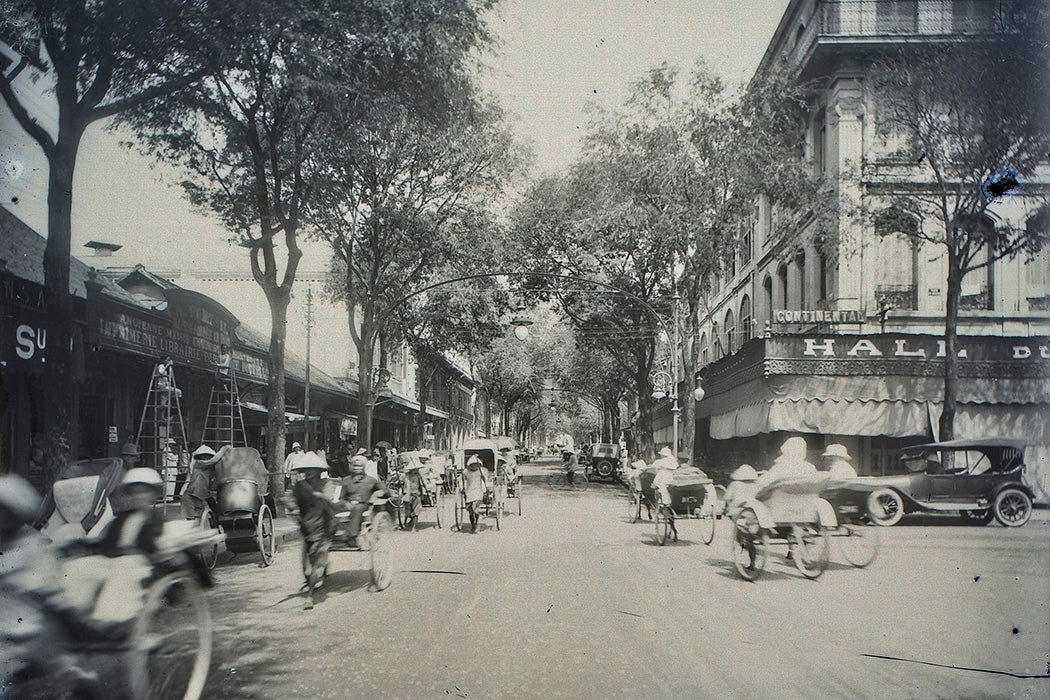In the late nineteenth century, many people in America and western Europe suffered from neurasthenia, a broadly defined condition with symptoms including everything from fatigue to headaches to impotence. It was so closely connected with fast-paced Western lifestyles that it was sometimes called “Americanitis.” But, as historian Laurence Monnais writes, decades after its peak in the West, neurasthenia became a widespread concern in urban Vietnam.
Monnais explains that the condition as understood in the West meshed nicely with certain ideas in Asian medicine—particularly the Chinese concept of qi, or vital energy. The Japanese medical system began recognizing neurasthenia as early as the 1880s, as the authorities during the Meiji Restoration incorporated German neurological models. Chinese scientific elites soon followed suit.
Yet it was rare for either French or Western-trained Vietnamese health care professionals to use the word in regard to Vietnamese patients. Some scientific articles did discuss “tropical neurasthenia” or “colonial neurasthenia” as an affliction of French people living in the country. Monnais notes that this terminology explicitly identifies the condition as one that only affected whites.
“Neurasthenia was an illness of civilisation, of urban life and industrialisation, the illness of modernity,” she writes. “The sickness of the ‘civilised’ could never admit a ‘colonised’ patient.”
It was Vietnamese patients themselves who began applying the term to their own experiences, and this interest was reflected in the popular press, which began reporting on neurasthenia in the 1920s and ’30s, sometimes referring to it as “intellectual overwork” or “cerebral weakness.” Analyzing advertisements for Western drugs published in Vietnamese newspapers between 1920 and 1930, Monnais found that about 30 percent promised to combat neurasthenia or “overwork.” The audience for these ads was made up of mostly highly educated, urban Vietnamese men—pretty much the counterparts to the westerners most likely to be diagnosed with neurasthenia. Along with pharmaceuticals, some of them turned to electrotherapy, another treatment that had peaked in popularity in the West a bit earlier.
To contextualize this development, Monnais writes that French colonial ideology focused on the promise of bringing civilization and modernization to the country, while the practical upshot for educated Vietnamese was often unstable working hours, pollution, and economic hardship. One 1939 article described life in Saigon as “a feverish existence, so hectic, so enervating on so many levels, as we carry on with this century of the mechanical, of speed…and of frenzied work.”
Weekly Newsletter
Monnais suggests that to self-diagnose with neurasthenia was to identify with modernity and civilization while also recognizing the harms caused by colonial structures. Especially in a context where medical professionals denied the diagnosis to Vietnamese people, it became a “weapon of the weak” and a metaphor for the struggle to adjust to colonization.
Monnais also suggests that this may explain the continuing salience of the diagnosis today. She notes that some people in Asia, and some Asian immigrants in other places, still suffer from neurasthenia, a condition now seen by westerners as “an anachronistic illness” or an “exotic ‘culture-bound syndrome.’”
Support JSTOR Daily! Join our new membership program on Patreon today.







